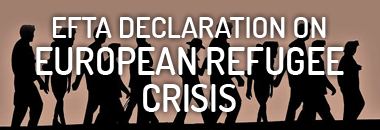EUROPEAN FAMILY THERAPY ASSOCIATION
CONNECTING FAMILY THERAPISTS AND TRAINERS
Maurizio Andolfi
Born in 1942. In 1975 he founded the Institute of Family Therapy

Judith Landau: The first South African International Conference, 1978, included some early family therapists: Carl Whitaker, Donald Bloch. Subsequently, the discovery that South Africa had been using the first integrative model (Transitional Family Therapy—TFT) since 1968 led to later visits by Maurizio Andolfi, Florence Kaslow, and others. Maurizio climbed his first tree with my children and rode his first horse in the bush among the wild animals. I have protected his dignity by not attaching the relevant photos!
Carmine Saccu: In 1972, when Maurizio decided to go to the United States, he told me that he wanted to meet all the pioneers. He committed himself to it. In Rome he worked hours and hours to make contacts. He was very good, he succeeded. In April 1974 I also went to visit him and he introduced me to many people.
When he returned in October 1974 he was requested by every systemic group in Rome, both by Cancrini’s group and by Vella’s. Each group tried to involve Maurizio with them and he felt a strong loyalty towards Luigi Cancrini. It was the politicized era of the single professional worker: no one could stand higher than the others, attempts were made to introduce equality between the different professions in mental health. No one could be different in those days and those who learned pretended to already know everything so as not to recognize the difference between skills. Maurizio went with the Cancrini group, he taught and they learned, without recognizing a special role for him. Maurizio felt frustrated and started looking around. I had formed a group with the Institute interns, there were 12 of us, Maurizio would have been the thirteenth. We recognized him as “our teacher” giving him a role of importance.
We were both researchers in Child Neuropsychiatry and Prof Bollea, the boss, set up a new Family Therapy Service for us in which Maurizio was the director. He didn’t like his colleagues because they looked for the pathology “within” the child rather than among family relationships. That’s how he went to Psychology, which had just opened. We worked together first as 13 then as 4 until 1991, when we separated.
In July 1975 we held the first congress in Europe “Family therapy in the community” with the entire group from the Ackerman Institute in New York, (Don Bloch, Peggy Papp, Kytty La Perriere and Olga Silvestein) and with Minuchin’s dolphin, Harry Aponte who brought the “structural model” to us. On November 1976 four of us (Maurizio, myself, Anna Maria Niccolò and Paolo Menghi) founded the Institute together.
After the long trip to the USA and some time spent in Italy, Maurizio declared that the time had come when he felt confident in showing his work, therefore he extended an invitation to Whitaker and Minuchin for a residential in Venice conducted by the three of them . All three experimented and showed us how to supervise. There were about fifty of us who came from all over Europe and also from Argentina. Among the Italians there were Vella, Loriedo, I think but I don’t remember Cancrini and I think Boscolo and Cecchin. Adolfo Loketec was present from the Argentina’ Systemic Society and Elida Romano came from Paris. We spent a few days together in the wonderful city of Venice, working hard and experimenting. It was 1981.



